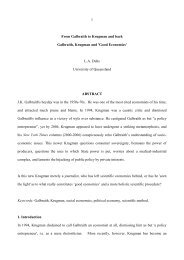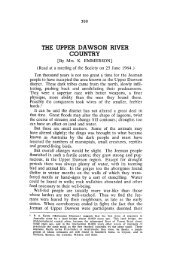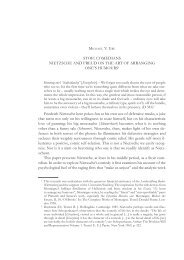Body language: - UQ eSpace - University of Queensland
Body language: - UQ eSpace - University of Queensland
Body language: - UQ eSpace - University of Queensland
You also want an ePaper? Increase the reach of your titles
YUMPU automatically turns print PDFs into web optimized ePapers that Google loves.
ears, clenched hands, fidgeting, buttoning coat or jacket, tense posture, avoiding eye contact, looking<br />
upward, becoming suddenly quiet and non-communicative. 8,13,23,25<br />
The presence <strong>of</strong> any <strong>of</strong> these signals, particularly in clusters, indicates that what was just said or done<br />
has probably had a negative impact on a patient's willingness to cooperate and be receptive. In such<br />
circumstances the clinician should look for other ways <strong>of</strong> explaining a point <strong>of</strong> view, and concentrate<br />
on listening more carefully to what the patient has to say. These moves may help to redirect the<br />
communication process back onto a positive trail with an easy bi-directional flow <strong>of</strong> information. 4,12,13<br />
Recognition <strong>of</strong> the patient's body <strong>language</strong> and facial expression is immensely helpful for effective<br />
communication. The clinician should be alert to positive signals a patient might be giving. These<br />
generally include nodding thoughtfully, body and feet orientated towards you, stroking chin, good eye<br />
contact, relaxed posture, open body position, open hands, thoughtful uh-hums, and handling <strong>of</strong><br />
documents or materials being discussed during patient education or oral hygiene instructions. 13,23,25,26<br />
The development <strong>of</strong> a cooperative and positive attitude and a willingness to actively contribute by the<br />
patient may present as sitting on the edge <strong>of</strong> the chair, tilted head, moving closer to the clinician,<br />
unbuttoning coat or leaning towards the clinician. 13,26 When favourable signals are noted every effort<br />
should be made to ensure the positive momentum; that is, building on what has been said and how it<br />
has been presented.<br />
Building rapport<br />
When there is rapport with someone, there is synchrony with them, and a feeling <strong>of</strong> sense <strong>of</strong> affinity or<br />
unity. The pr<strong>of</strong>essional relationship lies within a comfortable range which allows communication to<br />
flow easily. Rapport is based on similarity. When two people have rapport their body <strong>language</strong>, energy<br />
levels, and the way they speak are <strong>of</strong>ten the same. This is called matching. We all do this naturally and<br />
unconsciously whenever there is rapport with someone, generally because people like people who are<br />
similar to themselves. 13 The rapport process can be consciously speeded up by actively matching<br />
someone verbally or non-verbally. 13,25 This creates a bond and allows communication to flow more<br />
easily. 4,13<br />
The clinician can match a person's body position (that is mirroring them), and the type and rate <strong>of</strong> their<br />
movements and gestures either partially or precisely. 13,25 Their voice (tone, volume, speed, rhythm, and<br />
pauses), as well as breathing patterns, and the degree <strong>of</strong> seriousness and formality can also be matched<br />
with a usually productive result.<br />
It is worth remembering, that rapport is something achieved with a person and is not a unilateral event<br />
involving only the patient. Do not copy every move a person makes, as their conscious mind should not<br />
notice that you are reactionary rather than spontaneous. Match and mirror sensitively and discreetly.<br />
Adjust verbal and non-verbal communications but do not copy blindly. A technique called leading can<br />
be used to test for rapport. Simply shift position and note whether the other person follows. The more<br />
quickly the other person follows the deeper the rapport is likely to be.<br />
Techniques to show attention and gather information<br />
It is important to make the speaker and the topic at hand the centre <strong>of</strong> attention. 8,13,14 When sitting and<br />
listening, communicate interest and involvement in the conversation by leaning slightly towards the<br />
patient. 8,15,26 However, if the leaning is beyond about 75 degrees it can become domineering and invade<br />
an individual's personal space. 8,13 If used carefully a 60 to 75 degree lean can subtly and tactfully<br />
persuade people to give more information. 13 However, if used insensitively it can easily be a negative<br />
prompt. A 60 to 75 degree lean backwards is also a useful strategy if someone appears to be nervous, is<br />
becoming emotional, or is talking about a difficult personal matter. This reduces some <strong>of</strong> the pressure<br />
4


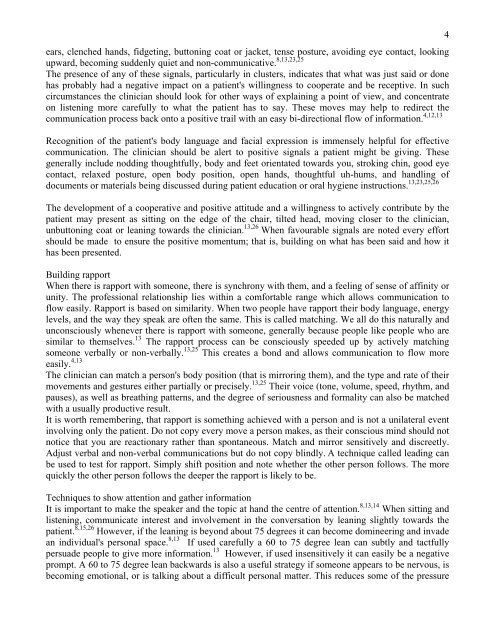


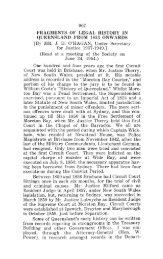


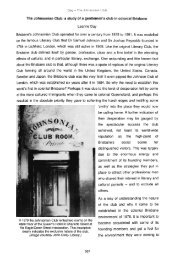

![Kanaka Labour in Queensland, [ises-mi] - UQ eSpace](https://img.yumpu.com/21925421/1/163x260/kanaka-labour-in-queensland-ises-mi-uq-espace.jpg?quality=85)


